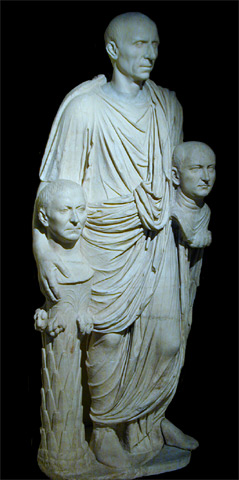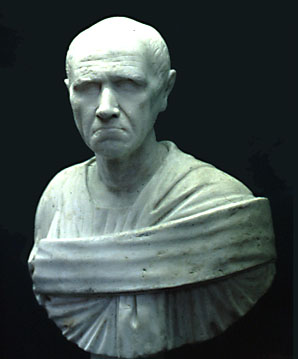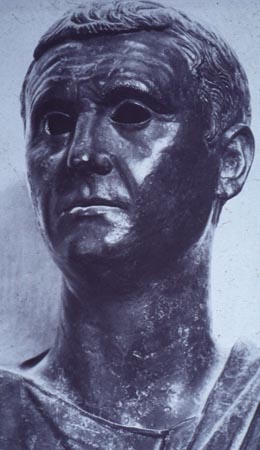|
|
Post by todhrimencuri on Jan 20, 2010 21:09:14 GMT -5
Roman busts are generally more "gritty" than Greek ones. Less idealized and more based on real features. Also, unlike Greek busts, they were more generally done during the lifetime of the said person so they are more likely to be accurate. There is a greater sense of seniority here and also they seem more "rustic" in character. Imperial ones become more idealized and "Greek like" and overly Hellenistic (filled with emotional idealization). Republican era busts are some of the best representation of Roman faces:     An idealized Roman male (bust of Romulus as Romans imagined him)  (probably) Idealized bust of Seneca:  Nobleman:  Emperor Claudius (born with a number of birth defects):  Later Roman portraiture declines in the matter of detail and it becomes harder and harder to classify them... eventually leading to the complete lack of portraiture under the Byzantine period (would have been fun to classify Justinian). |
|
|
|
Post by todhrimencuri on Jan 20, 2010 21:11:50 GMT -5
I would say that the continuity between Roman and modern Italian faces is pretty striking. The type of faces up above can probably be found in any given Italian village.
|
|